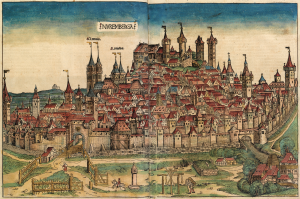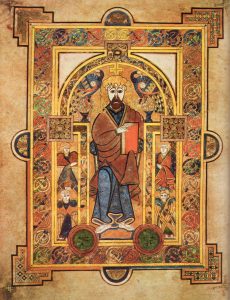The Persian manuscript of the dog (possibly tiger, but let’s go with dog) made revisit chapter 3 in My Name is Red, “I Am a Dog.” I found two quotes in this chapter to be particularly interesting, the first: “By pointing out this affection shown to the cat, which has incidentally been denied to us dogs, and due to our eternal feud with this feline beast, which even the stupidest of men recognizes as an ingrate, people have tried to intimate that the Prophet himself disliked dogs” (12). This quote follows the description of Muhammad cutting his robe as to not disturb a sleeping cat. I think this quote undermines Islam, and religion in general, by pointing out how far fetch such interpretations can stem from. The dog speaking in this chapter thinks it is unfair that humans have such animosity towards dogs because of their relationship to the cat. The dog, however, cannot seem to stick to one side of the argument.
In attempt to defend all canines, the dog cites a chapter of the Koran where seven men sleep for three hundred and nine years and awake attached to Allah. The dog notes that the eighteenth verse mentions a dog resting outside the cave and concludes, “as a dog, I take pride in this chapter, and through it I intend to bring the Erzurumis, who refer to their enemies as dirty mongrels, to their senses” (13). After implying that interpretations of prophet Muhammad’s actions were dubious, the dog then references the Koran for an explanation not all that different from the logic he is trying to refute.
The dog seems to be using the same flawed evidence that he is denouncing. Could this represent the struggle between the East and West? Is the dog being facetious when he references the Koran for evidence of dog’s loyalty and protection?


